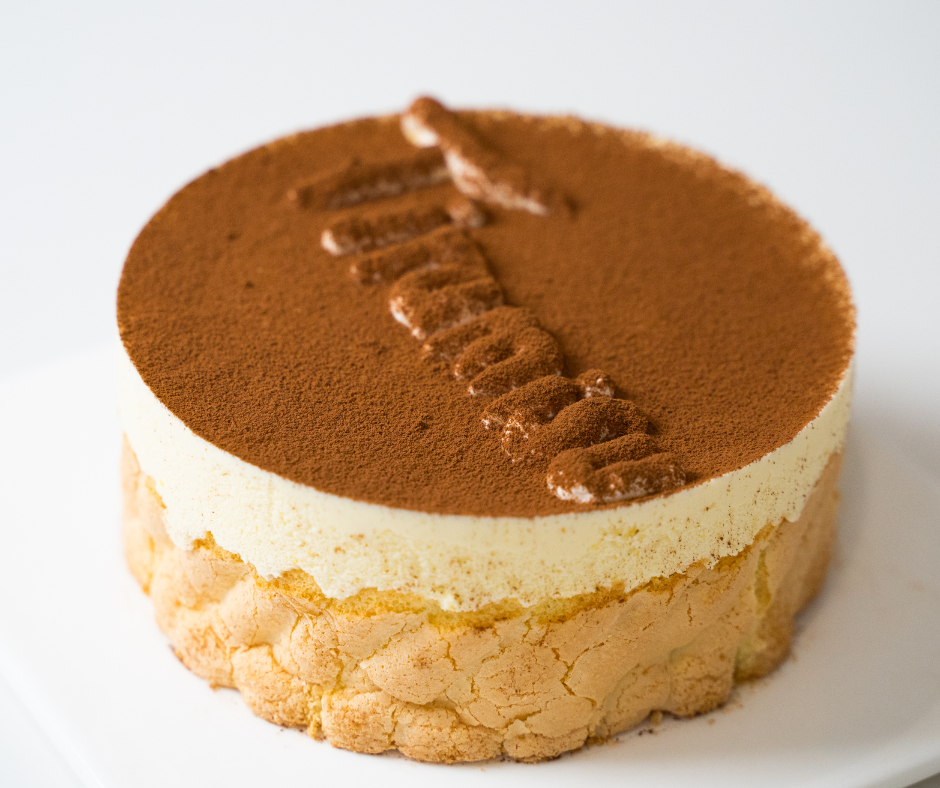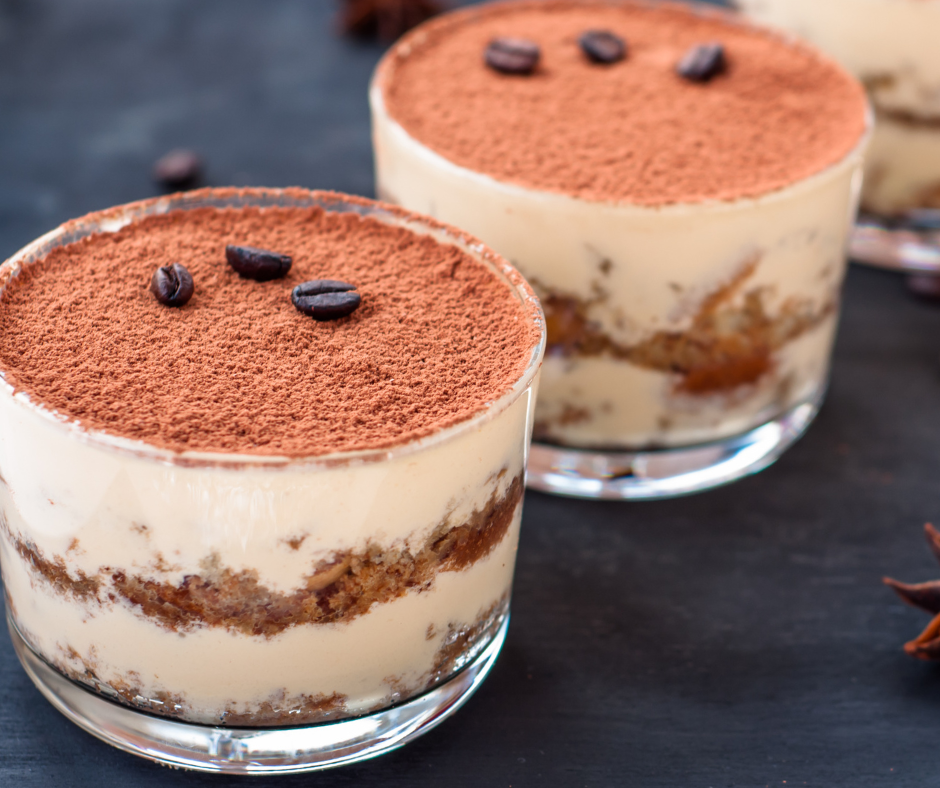Yes, tiramisu contains caffeine, due to the presence of espresso or coffee. This classic Italian dessert typically includes a layer of ladyfingers soaked in coffee.
Tiramisu, a delectable blend of bold flavors and delicate textures, tempts the palate with its combination of espresso-soaked ladyfingers, mascarpone cheese, cocoa, and occasionally a splash of liquor. Caffeine content can vary based on the amount of coffee used, making each slice a delightful, yet potentially energizing, treat.
Those sensitive to caffeine or enjoying the dessert in the evening may want to be mindful of tiramisu’s caffeine content. Perfect for rounding off a fine meal or as a luxurious pick-me-up, tiramisu’s popularity endures in cafes and kitchens worldwide, offering a sophisticated balance of sweet and bitter notes.
The Origins Of Tiramisu
The sweet treat tiramisu comes from Italy, first seen around the 1960s. Its name means “pick me up” or “cheer me up.” Espresso, a key ingredient, gives tiramisu its caffeine content. Mascarpone cheese, ladyfingers, cocoa, and sugar are also key to its classic taste.
Over time, chefs have put new twists on the recipe. They use different flavors, such as chocolate, berry, or even pumpkin. Each change can affect how much caffeine ends up in the dessert. Remember, the more espresso or coffee, the more caffeine.
| Ingredient | Role | Does It Contain Caffeine? |
|---|---|---|
| Espresso | Base flavor | Yes |
| Mascarpone Cheese | Creamy Texture | No |
| Ladyfingers | Layering | Sometimes |
| Cocoa | Dusting | Yes |
Ladyfingers can contain caffeine if they have been dipped in coffee.
Key Components Of Tiramisu
The Role of Coffee in Tiramisu is quite significant. Coffee’s distinct flavor and caffeine content contribute to Tiramisu’s unique taste. Typically, espresso is used, and its purpose is not just for flavor but also to soak the ladyfingers, creating the dessert’s signature texture. The caffeine amount can vary based on the coffee strength.
Other Essential Ingredients include mascarpone cheese, sugar, eggs, and cocoa powder. Some recipes might also incorporate flavors like rum or chocolate. Each element plays a part in crafting Tiramisu’s deliciousness. Both adults and kids love the creamy and rich feel. But, due to caffeine and alcohol, it’s often more suited for adults.
Caffeine Content In Tiramisu
Tiramisu does contain caffeine, primarily due to espresso used in its recipe. A typical slice of tiramisu can range from 30 to 50 mg of caffeine. This varies based on the amount of coffee and the type of coffee bean used. For comparison, a regular cup of coffee holds about 95 mg of caffeine. Other desserts may have less or no caffeine, depending on the ingredients. Chocolate desserts, for example, could have caffeine from cocoa.
| Dessert | Caffeine Content (approx.) |
|---|---|
| Tiramisu | 30-50 mg |
| Regular Coffee | 95 mg |
| Chocolate Cake | Varies |

Factors Affecting Caffeine Levels
The type of coffee used can change the caffeine in tiramisu. Strong Italian espresso has more caffeine than weaker coffee types.
The way tiramisu is made also matters. Using more coffee-soaked ladyfingers will mean more caffeine. Less coffee leads to less caffeine. Each tiramisu recipe is different. Every chef makes tiramisu their own way. So, some tiramisu has more caffeine than others.
Potential Effects Of Caffeine
Caffeine is in many foods and drinks, including tiramisu. Some people might be more sensitive to caffeine than others. It means they could feel effects like a fast heartbeat or being too awake. Others may handle it better and not feel much.
Those who have sensitivities should check what they eat closely. Always know how much caffeine is in your desserts. For tiramisu, it can vary based on the recipe.
Eating tiramisu might not suit everyone. It depends on your own body. Doctors can help if you’re not sure about your caffeine sensitivity.
:max_bytes(150000):strip_icc()/__opt__aboutcom__coeus__resources__content_migration__serious_eats__seriouseats.com__recipes__images__2017__06__20170526-tiramisu-vicky-wasik-41-00531445710a4dfa83ffc7d3a65abb12.jpg)
Enjoying Tiramisu Responsibly
Tiramisu delights many with its sweet layers and creamy texture. Yet, it’s important to know, it contains caffeine.
Eating tiramisu early in the day is best. This gives your body time to process the caffeine. Avoid tiramisu close to bedtime to ensure a good night’s sleep.
Being mindful of how much you consume is key. Enjoying small portions can satisfy cravings without too much caffeine. Savoring each bite makes a little go a long way!
Frequently Asked Questions Of Does Tiramisu Have Caffeine
How Much Caffeine Does A Tiramisu Have?
A typical serving of tiramisu contains approximately 30-50 mg of caffeine. This varies based on the coffee and cocoa used in the recipe.
Will Tiramisu Affect My Sleep?
Tiramisu can affect sleep due to its caffeine content, typically found in the espresso and chocolate components. Sensitivity to caffeine varies, so it might disrupt sleep for some people.
Does Tiramisu Always Have Coffee?
No, tiramisu does not always contain coffee. Some variations use other ingredients like fruit juices or alcohol to soak the ladyfingers.
Does Tiramisu Give You Energy?
Tiramisu contains caffeine and sugar, which can provide a temporary energy boost.
Conclusion
Tiramisu is more than just an indulgent treat; it’s a dance of flavors that often includes caffeine. While the content varies, one slice can perk up your senses, akin to a mild cup of coffee. Before diving in, consider your caffeine sensitivity, especially close to bedtime.
Delight in its richness, but sip the experience mindfully.

